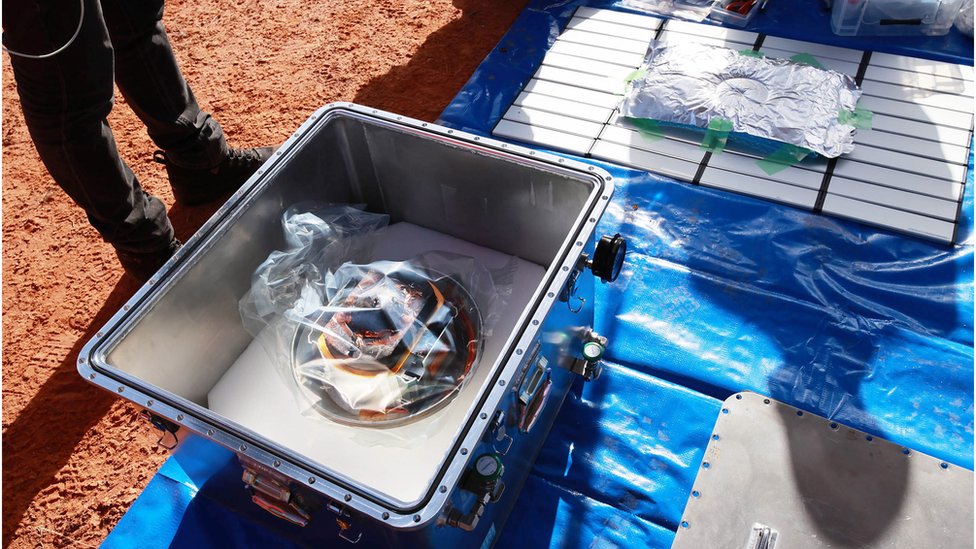Hayabusa-2: Capsule with asteroid samples in 'perfect' shape
Prof Alan Fitzsimmons, from Queen's University Belfast, said the sample would "reveal a huge amount, not only about the history of the Solar System, but about these particular objects as well".
Asteroids are essentially leftover building materials from the formation of the Solar System. They're made of the same stuff that went into forming the Earth, but they avoided being incorporated into planets.
"Having samples from an asteroid like Ryugu will be really exciting for our field. We think Ryugu is made up of super-ancient rocks that will tell us how the Solar System formed," Prof Sara Russell, leader of the planetary materials group at London's Natural History Museum, told BBC News.
Studying the samples from Ryugu could tell us how water and the ingredients for life were delivered to the early Earth.
The container with material from a space rock called Ryugu parachuted down near Woomera in South Australia on Saturday evening (GMT).
A recovery team in Australia found the spacecraft lying on the sandy ground, with its parachute draped over a tree.
The samples were originally collected by the Japanese spacecraft Hayabusa-2.
The spacecraft spent more than a year investigating Ryugu before returning to Earth. As it approached our planet, Hayabusa-2 released the capsule with the samples and fired its engines to push off in another direction.
The capsule, meanwhile, entered the Earth's atmosphere.
Addressing journalists, he acknowledged past missions that had experienced technical problems, but said: "Regarding Hayabusa-2, we did everything according to the schedule - 100%. And we succeeded in sample return as planned. As a result, we can move on to the next stage in space development."
The next stage includes a mission called MMX, which will aim to bring back samples from Mars' largest moon Phobos.
Earlier on Saturday, the capsule was picked up by cameras as a dazzling fireball streaking over Australia's Coober Pedy region.
At around 18:07 GMT (04:37 local time), the recovery team identified the position of the capsule on the ground. A helicopter, equipped with an antenna to pick up the beacon, took to the air shortly afterwards.
Satoru Nakazawa, from the Japan Aerospace Exploration Agency (Jaxa), who was part of the operation at Woomera, described the search: "We went there with the helicopter and it was emitting the beacon signal. But at that time, it was still dark, so it was unclear [where it was]. I was very, very nervous.
"We flew over the area [where it landed] many times and I thought maybe that was where it was. Then the Sun rose and we could visually confirm the existence of the capsule. We thought: 'Wow, we found it!"
"But we had a very jittery, frustrating time until sunrise."




إرسال تعليق